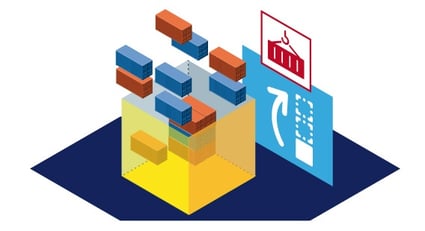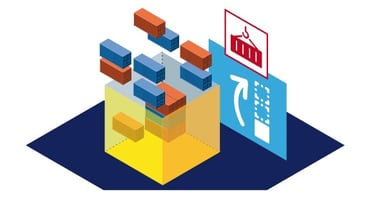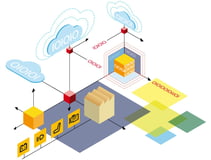5 Predictions for Advanced Analytics in 2018
Brian Hoey - June 28, 2018

 Each year, topics like big data, advanced analytics, machine learning, and artificial intelligence dominate conversations about supply chain technology, becoming the focus of increasing amounts of speculation as the real power of these technologies becomes clearer and more apparent. As a result, it can be difficult to parse the jargon from the meaningful discourse and the pragmatic analyses from the wishful thinking when deciding how to set expectations for the evolving global supply stream. In the spirit of helping to put all of the hype into context and give supply chain managers the tools they need to look towards an ever-uncertain future, here are a few predictions for the future of advanced analytics:
Each year, topics like big data, advanced analytics, machine learning, and artificial intelligence dominate conversations about supply chain technology, becoming the focus of increasing amounts of speculation as the real power of these technologies becomes clearer and more apparent. As a result, it can be difficult to parse the jargon from the meaningful discourse and the pragmatic analyses from the wishful thinking when deciding how to set expectations for the evolving global supply stream. In the spirit of helping to put all of the hype into context and give supply chain managers the tools they need to look towards an ever-uncertain future, here are a few predictions for the future of advanced analytics:
1. Data will continue to grow exponentially as Big Data becomes an accepted fact of life
While there is some suggestion that the pace of Moore’s law (which essentially holds that computer processing power should double every two years) might be slowing in recent years, the pace of data creation shows no signs of doing so. Thanks in large part to the parallel rises of social media and the internet of things (IoT), more data is being collected, stored, and analyzed than ever before. It shouldn’t be surprising, then, if in the near future the business world stops thinking of Big Data as a trend looming on the horizon and starts considering it a standard facet of operational decision-making. Within a few years, the idea of a business without a large cache of data and a robust analytics process will seem antiquated.
2. Analytics processes will lead data to become more centralized and unified within operations
At the moment, many businesses struggle to break down functional silos and create an open environment for sharing and accessing mission critical information intra-operationally. As sophisticated analytics processes become more and more common, however, businesses will face pressure to ensure that their data is centralized and widely accessible in order to facilitate predictive and prescriptive insights based on that data. While the insights themselves will be the driving force behind this centralization, increased visibility and interoperability will be key fringe benefits that may prove just as important to the organizations. After all, many smarter, Industry 4.0-aligned workflows, from transport logistics to sales & operations execution (S&OE), rely on digitization and integration just as much as they rely on analytics.
3. Analytics will increasingly be used to promote alignment and keep everyone on the same page
As an outgrowth of the centralization of data, in the next few years businesses may find that advanced analytics processes can help to align disparate teams within their organizations around the same vision and goals. The reasoning here is twofold: analytics can power smarter and more accurate predictions, leading to a shared vision of mid- to long-term expectations; at the same time, analytics can also help to power robust S&OE workflows, which have the potential to keep short- and mid-term plans on track by making daily and weekly adjustments to transport plans and inventory levels. Combined, these two factors can create an environment in which planner’s expectations are sufficiently aligned with reality (and sufficiently capable of evolving) that any looming sense of uncertainty or confusion within an organization about its longer-term direction can be dispelled. Just as increased visibility can keep shadow operations and intra-operational silos from forming, smarter analytics can help to maintain an open and collaborative atmosphere that connects disparate points on the value chain.
4. More companies will drive towards real-time workflows
We alluded to the power of S&OE briefly above, but another of its many benefits is the introduction of real-time data into the supply chain. In the coming years, we expect that more and more businesses will see the potential value of real-time data, and will make its integration a major facet of their analytics strategies. Real-time, in turn, will add value to analytics workflows by increasing the quality of data that predictive and prescriptive processes are able to use, as well as the speed with which they are able to access that data. The result will be more agile, up-to-the-minute forecasts that give granular, instantaneous pictures into the entire supply chain.
5. Rates of automation and internet of things (IoT) adoption will increase across multiple sectors
As of a couple of years ago, more businesses were interested in IoT devices than were actually deploying them. While that may continue to be the case, we expect to see IoT adoption increase as more and more manufacturers attempt to align themselves with Industry 4.0 frameworks. By this same logic, modern manufacturing operations will also become increasingly automated, not just in terms of production processes, but with regard to more digitized workflows like order restocking and transport routing. What implications do these changes have for advanced analytics? Essentially, these impending developments suggest that as tools like smart sensors on factory floors improve visibility and generate critical data for advanced analysis, evolving workflows will simultaneously put more pressure on those analytics processes than ever before, requiring robust predictive and prescriptive insights to keep the supply chain operating smoothly. In other words, as modern analytics workflows become increasingly ubiquitous, they will also become increasingly crucial to success.
LATEST POSTS
- Understand Circular Economy in The Manufacturing Industry
- How Can Industry 4.0 IT Integration Be Achieved Smoothly?
- The Significance of Order Sequencing in Discrete Manufacturing
- How to improve your Supply Chain Management: The Power of Control Towers
- Optimizing Human Resource Scheduling in Manufacturing: A Technological Approach



